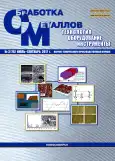Unlike traditional methods of material removal, rapid prototyping technologies are aimed at creating complex products by sequentially adding material (materials). By now, a large number of rapid prototyping methods, which differ in the material used and in the method for shaping the article, are known. Innovative is the method of selective laser melting of physical copies of various objects from metals, alloys and metal-matrix composite materials to meet the requirements of the Aerospace, Defense, Automotive and Biomedical Industries. An important direction in the development of selective laser melting technology is improving the quality of the product being formed. This is a complex multi-parameter process, in which it is possible to isolate about 130 parameters that affect the final result. The paper presents the results of experimental studies of the influence of argon shielding gas, mechanical activation of powder and the effect of technological melting modes: laser radiation power, laser beam travel speed, scanning step, preheating temperature of the powder material on the surface roughness obtained from copper powder material by selective laser melting. Melting experiments of copper powder are implemented in a layer-by-layer laser melting unit of the original design, which allows regulating all technological melting modes. The surface roughness is determined by the Olympus LEXT OLS4100 digital non-contact microscope. A mathematical dependence of the roughness of the surface layer from copper powder on the technological melting regimes is obtained on the basis of the theory of experimental planning and static processing of the results. Significant parameters of the regime are determined: laser radiation power, laser beam moving speed, scanning step, affecting the layer roughness. As well as the range of its change from 480 to 725 microns with an increase in power from 14 to 30 watts, the laser beam travel speed is 1400 mm/min, the powder heating temperature is 114 oС, the scanning step is 0.2 mm. From 750 to 480 μm with an increase in the speed of the laser beam from 200 to 3000 mm/min, power 22 W, powder heating temperature 114 °C, scanning step 0.2 mm. An increase in the scanning step from 0.1 to 0.3 mm leads to a decrease in the roughness from 740 to 525 μm with a laser beam moving speed of 3000 mm/min, a power of 30 W, a powder preheating temperature of 200 °C. The positive influence of the protective atmosphere and mechanical activation of the powder material on the quality of the surface layer is shown.
 6-16
6-16


 17-27
17-27


 28-34
28-34


 35-41
35-41


 42-50
42-50


 51-58
51-58







